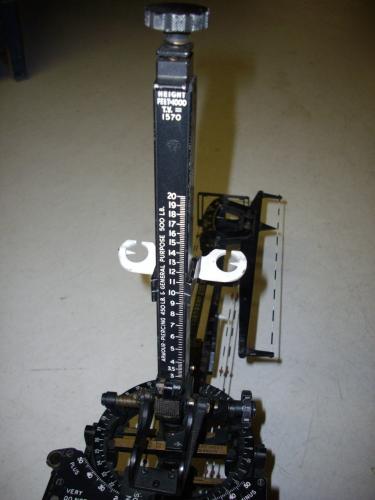Prior to World War I the bombsight device in service was the Lever Sight, which the pilot held out of the cockpit in one hand while flying the aircraft with the other. This bombsight had no way to calculate “drift” the sideways motion of the bombs due to wind. This meant the aircraft had to attack their targets directly along the wind line.
In 1916, Henry Wimperis started design of a new bombsight. His Drift Sight included a simple system for calculating the effects of wind. When an aircraft flies in the presence of wind its flight path over the ground is a function of the aircraft’s airspeed, heading, and the speed of the wind and its heading. Wimperis decided to attack the drift problem by incorporating a vector calculator directly into the bombsight, one that used basic mechanical calculator techniques to eliminate as many of the manual calculations as possible.
Prior to the start of World War II new features were added. One modification was the “Auxiliary Drift Bar” attachment. This consisted of a single drift wire in a C-shaped clamp that could be moved along the main drift wires, and rotated in relation to them. Prior to the bomb run, the bomb aimer would sight through the backsight toward the Auxiliary Drift wire, and continually rotate the wire until objects on the ground could be seen moving directly along it – this gave the drift angle. Finally, the later versions used by Coastal Command and the Royal Navy also included a further adjustment, the “Fourth Vector” for attacking moving targets, primarily for use against ships and submarines.

The Mark IV bombsight on display at the Museum

The magnetic compass built in to the bombsight to assist the Bomb Aimer

The Bomb Aimer's view - the sights were aligned with the target before bomb release
For more information on this Bombsight see Mk. IX Bombsight Manual.